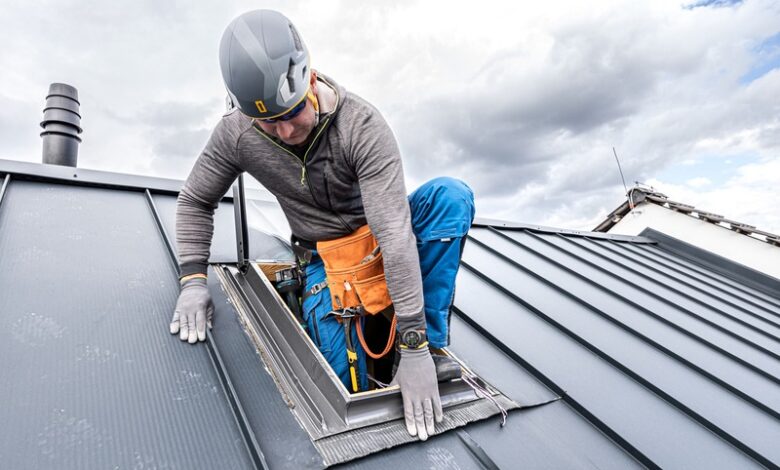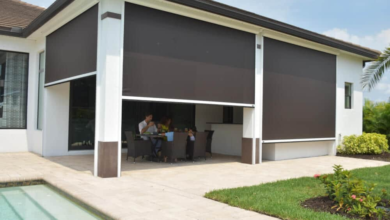Understanding Roofing Materials: What Works Best for Your Climate

When it comes to roofing, the “one-size-fits-all” approach doesn’t hold up. A roof isn’t just about shelter; it’s about performance, durability, and efficiency in a specific environment. Whether you’re in the snowy Northeast, the humid Southeast, or the sun-drenched Southwest, choosing the right roofing materials for your region is crucial to long-term satisfaction.
The materials you select impact everything—from how your home handles temperature shifts to the frequency of future repairs. That’s why taking the time to match your roof to your climate is one of the smartest moves a homeowner or property manager can make.
Why Climate Matters in Roofing
Your roof is the first line of defense against nature’s elements. It’s subjected to wind, rain, sun, snow, and hail—sometimes all in the same year. If your roofing materials aren’t designed to handle the specific stresses of your region, performance will drop rapidly.
For example, materials that work well in dry, hot climates might warp or rot in humid zones. Similarly, roofs built to endure heavy snowfall might be overkill for temperate areas but essential in cold, mountainous regions.
When choosing roofing for residential or commercial purposes, the local environment must guide your decision—not just style or price.
Asphalt Shingles: Versatile but Not Always Ideal
Asphalt shingles are the most commonly used roofing material in the United States, and for good reason. They’re cost-effective, available in various colors, and easy to install. But their performance varies depending on where you live.
In moderate climates with mild winters and summers, asphalt shingles can last between 20–30 years. In hotter, sun-intense areas, their lifespan shortens significantly due to UV degradation. Heavy rainfall can also loosen the granules that protect the surface, leading to quicker wear and tear.
So while asphalt shingles are widely accepted, they may not be the best long-term choice for all climate zones.
Metal Roofing: A Solid Contender for Many Conditions
Metal roofing has evolved far beyond the noisy, industrial look of the past. Today’s metal roofs are stylish, lightweight, and incredibly resilient.
They reflect heat in hot climates, helping homes stay cooler and reducing the strain on HVAC systems. In snowy areas, metal’s smooth surface allows snow to slide off quickly, preventing ice dam buildup. They also hold up well against high winds and hail.
Metal roofing may come at a higher upfront cost, but its lifespan—up to 50 years or more—makes it a strong contender for both residential roofing and commercial roofing applications.
Clay and Concrete Tiles: Heat Resistance with a Heavy Footprint
In warm and arid climates like the Southwest, clay and concrete tiles dominate the landscape. They offer superior insulation against the sun and don’t warp or dry out in high heat. Plus, they provide a distinct aesthetic that aligns with Spanish, Mediterranean, and desert architecture.
However, these tiles are heavy and require reinforced support structures. In regions prone to freeze-thaw cycles, they can crack, making them less suitable for northern climates.
Before opting for tiles, homeowners should consult with a roofing company experienced in evaluating structural capacity and weather compatibility.
Wood Shingles and Shakes: Natural Charm, Weather Permitting
Wood shingles and shakes bring a rustic charm and natural beauty to any home. They perform well in dry climates, where there’s minimal risk of mold or rot. In humid or rainy areas, however, they require frequent maintenance to combat moisture damage.
Additionally, wood roofing is not fire-resistant unless specially treated—an important consideration for areas with wildfire risk.
If you love the aesthetic of wood but live in a high-moisture zone, alternative synthetic materials may mimic the look while offering better durability.
Slate Roofing: Timeless and Tough
Slate is often seen as the gold standard in roofing materials. It’s beautiful, durable, and can last over a century when properly installed. Slate resists heat, fire, moisture, and even the harshest snowfalls.
The downside? It’s heavy and costly—making it suitable for certain architectural styles and budgets, but not ideal for every homeowner. Homes must be engineered to support its weight, and installation requires experienced professionals.
Still, for those in areas with extreme weather fluctuations, slate offers unmatched longevity and resilience.
Synthetic Roofing Materials: The Modern Solution
For homeowners seeking flexibility and innovation, synthetic roofing materials offer an exciting option. These can mimic the look of slate, wood, or tile while being lighter and more affordable.
Designed to endure UV rays, rain, snow, and wind, synthetic materials are gaining popularity across regions. Some varieties even incorporate recycled materials, making them eco-friendly.
They’re especially appealing for those looking for a modern approach to roof replacement without sacrificing visual appeal or performance.
Roofing for Commercial Versus Residential Needs
While material choice is important for all buildings, commercial roofing requires a broader lens. Flat roofs, common in commercial properties, demand materials that can handle pooling water and foot traffic—like TPO, EPDM, or modified bitumen.
In contrast, residential roofing leans more on aesthetics, noise reduction, and insulation. Still, both sectors benefit from roofs built with the local climate in mind.
The right roofing company will guide clients through options tailored to both function and environment, ensuring long-term satisfaction.
Installation Quality Makes the Difference
Even the best materials won’t perform well if installation is subpar. Roof installation is about more than just laying shingles or tiles—it involves sealing, ventilation, underlayment, and flashing. Poor workmanship can compromise the integrity of even the most premium roofing systems.
Pineapple Roofing recommends that homeowners vet any installer thoroughly, asking for references, credentials, and clear timelines. A high-quality installation sets the foundation for lasting protection.
The Smart Way to Choose
Before deciding on a roofing material, homeowners should:
- Assess their local weather patterns
- Set a realistic budget (including potential future maintenance)
- Evaluate the home’s architectural design and structural limits
- Speak with a roofing expert who understands climate-specific needs
Don’t choose solely on appearance or cost. Think longevity, climate compatibility, and long-term energy efficiency. Matching the material to your region pays off in fewer repairs and lower lifetime costs.
Conclusion
Roofing isn’t just a protective shell—it’s a long-term investment in the comfort, efficiency, and value of your property. The materials you choose must be suited to the climate you live in and installed with precision. From wood and slate to metal and synthetics, each option offers strengths and limitations based on your local weather.
Working with an experienced roofing company like Pineapple Roofing can help homeowners make informed, climate-appropriate decisions that stand the test of time.




